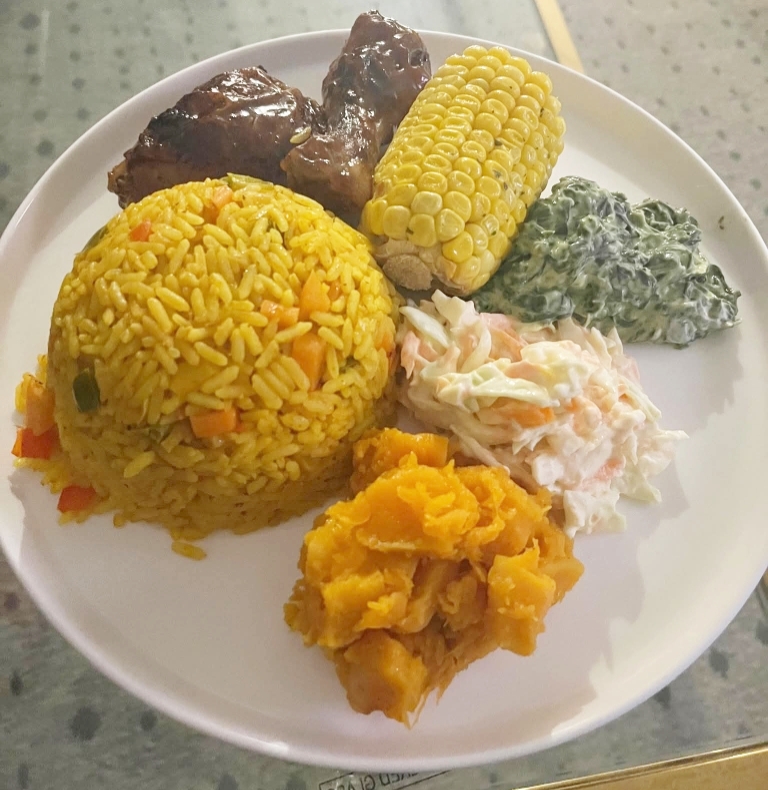By Prudence Mathenjwa
As Heritage Month comes to a close in South Africa, we turn our attention to the various ways young people engage with respective traditional cuisine. While some stay closely tied to their cultural roots through food, others are merging traditional dishes with modern trends ,highlighting the rich diversity and evolving nature of contemporary food culture.
A student at Eshowe TVET College, Mcebisi Shongwe who is studying towards obtaining a qualification in agriculture holds tradition and culture dearly in his heart.
Shongwe proudly shares his love for amasi, a classic Zulu dish of fermented sour milk often enjoyed with uphuthu.
“This is one of the many dishes I love to eat the most as a Zulu young man and I cook it many times at the student residence,” he said.
“Amasi is way better than most modern meals, it is a traditional meal that we have at home, it’s an easy dish to prepare and is quite healthy especially for young men who grow up and build muscle,” Shongwe added.
Sphumelele Madide, another young person who is a Journalism student at the Durban University of Technology said experimenting with food has become her way of honouring heritage while embracing global culinary trends.
The young woman described how she enjoys “playing around with food” to make healthier and creative versions of traditional meals.
Where previous generations might have prepared samp with beans or spinach in its simplest form, today’s cooks add creamy sauces or mix in flavours and seasonings from other cultures, producing dishes like creamy samp or spinach enriched with dairy.
“My favourite traditional meal is tripe and steamed bread (ujeqe) but the food I enjoy making is simple food, since I’m a bit of a lazy cook. I love preparing quick dishes like your savoury rice, grilled meat and throwing in some vegetables. I love how diverse cooking methods have become, since there is no one way to cook your food.”
Not everyone views these shifts positively, 61-year-old Nomusa Mthembu reflects with concern on what she sees as the neglect of wholesome traditional meals.
“In our time we would return from school to eat food like amasi, pumpkin porridge (isijingi), or maize meal mixed with beans (isgwaqane). These foods were simple, but they were healthy. Nowadays, many young people prefer oily and processed meals.”
Mthembu also expressed concern about the shifting health patterns she has noticed in children today, including the onset of early puberty. She linked these changes to a higher intake of dairy-rich foods such as eggs, cheese, milk, and margarine.
“As young girls, we were monitored on how much eggs, cheese, milk or margarine we consumed.
“We thought it was unfair to us, seeing the boys eating it with restraint but later we understood that these foods were not meant for our growing bodies at the time.”
The stories of these students and the elderly view capture the tension between continuity and change in South Africa’s food traditions. While some young people hold on tightly to heritage meals, others reinterpret them with modern flair, and elders remind the nation of the nutritional wisdom embedded in ancestral diets.
This Heritage Month, food once again proves to be more than nourishment; it is a memory, identity, and a living conversation between generations.

